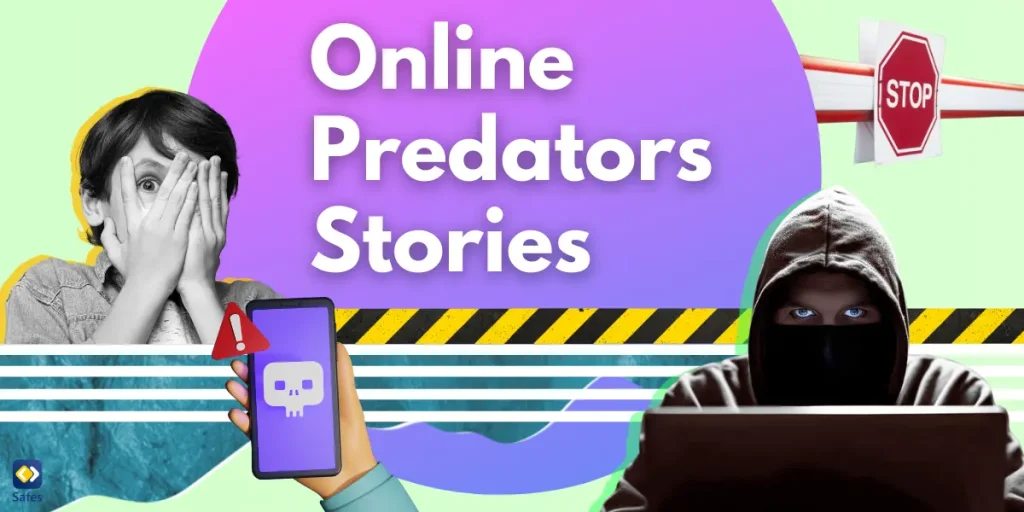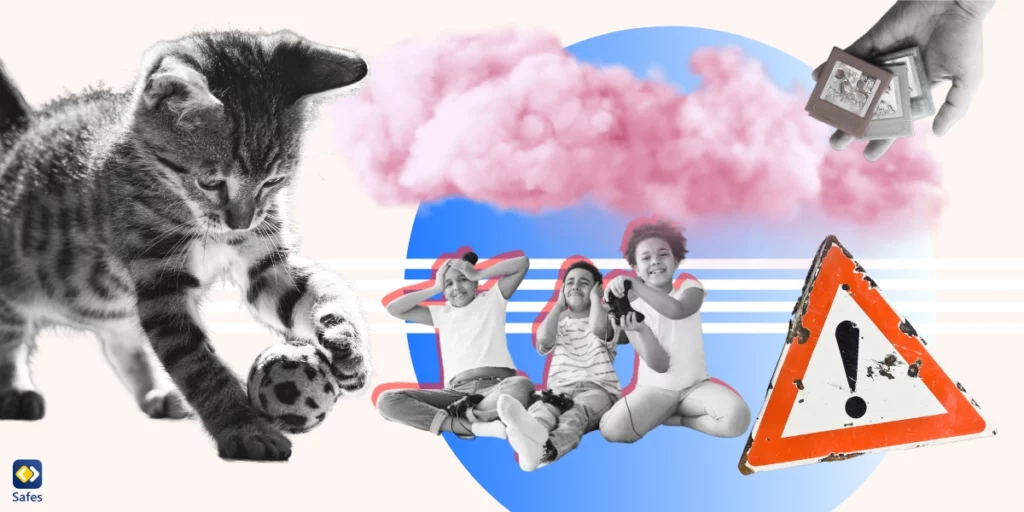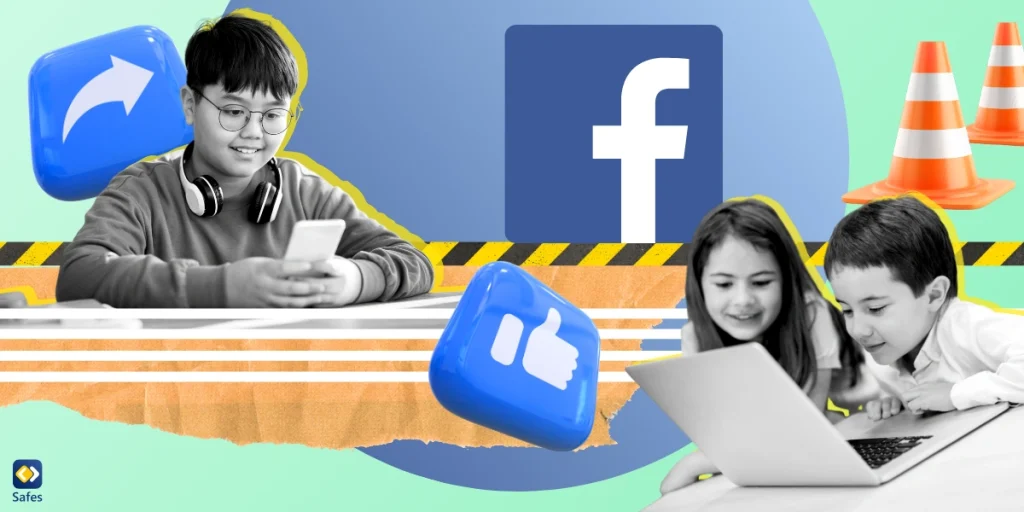Online predators are individuals who use the internet to manipulate and exploit children online. These predators often build trust through social media, gaming platforms, or messaging apps, posing a serious risk to young people. The biggest danger lies in child sexual exploitation, where predators coerce or deceive children into sharing explicit content.
Download and Start Your Free Trial of the Safes Parental Control App
For parents, awareness of online predator stories is essential to knowing how to protect their children. Understanding the tactics predators use and the potential threats can help prevent these devastating incidents from occurring. By staying informed, parents can take steps to safeguard their children’s online interactions.
Who Are Online Predators?
Sexual predators are individuals who use the internet to manipulate and target children for their own harmful purposes. They often lurk on social media sites or gaming platforms, seeking to connect with vulnerable young people. These predators use cunning tactics to build trust with children, pretending to be friends or mentors.
Once this trust is established, predators can sexually exploit the child, convincing them to share personal information or explicit content. These sexual predators manipulate children’s innocence, making them believe they are in a genuine relationship or that they owe them something. They exploit this false connection, leading to emotional and sometimes physical harm. Parents must stay alert to these dangerous tactics.

Real-Life Online Predator Stories
Online grooming by adult predators is alarmingly prevalent, with 62.5% of sexual offenses against 16-17-year-olds involving this form of manipulation, according to Screen&Reveal. The following real-life incidents underscore how quickly these situations can turn dangerous, making it crucial for parents to remain vigilant and educate their children about the risks lurking online.
The Case of Alicia Kozakiewicz
Alicia Kozakiewicz was just 13 when she became one of the first highly publicized cases of child abduction by an online predator. Alicia, from Pennsylvania, had been chatting online with someone she believed to be a teenage boy. Over time, they developed what she thought was a close friendship. But the person she was talking to wasn’t a teenager—it was a much older man named Scott Tyree, who had been grooming Alicia for months.
On New Year’s Day in 2002, Alicia agreed to meet him near her home. Trusting this person she thought she knew, Alicia was kidnapped and driven across state lines to Virginia. There, she was held captive in Tyree’s basement, where she endured horrific abuse. Tyree even live-streamed Alicia’s torture on the internet. After several days, Alicia was miraculously rescued by the FBI following a tip from an online viewer who saw the abuse. She was reunited with her family, and though her physical ordeal ended, Alicia’s recovery took time as she worked through the emotional trauma.
Alicia has since become a fierce advocate for internet safety, working tirelessly to raise awareness about the dangers of online predators and to help protect children from the horrors she endured.
True stories of online predators such as this are a stark reminder of the extreme dangers that can come from online grooming, even when everything seems innocent on the surface. She was a typical teenager who thought she was making a new friend, but her trust was manipulated by someone with malicious intent. This shows just how easily predators can exploit children’s innocence and desire for connection.
The Case of Amanda Todd
One of the online predators’ stories that best depicts their consequences is the next case. Amanda Todd was just 15 when her life took a devastating turn. It all started when, as a young teen, Amanda was chatting online with someone who convinced her to flash her chest on a webcam. This seemingly small mistake spiraled into a nightmare. The person she trusted captured the moment and later blackmailed her, threatening to share the image if she didn’t perform more explicit acts.
Despite Amanda’s efforts to escape by changing schools, the predator shared the image with her friends and classmates, and she became the target of relentless bullying. She made a YouTube video before her death, silently sharing her pain on handwritten note cards, and just weeks later, Amanda took her own life.
This story highlights how a single moment of vulnerability online can follow a child, even when they try to start over. It’s so important to teach children from an early age about the dangers of sharing personal photos and private details online. As parents, you need to maintain a strong connection with your children and create an open, judgment-free space where they can share their struggles. Let them know that no matter what, you’re there to help and protect them.
The Case of Carly Ryan
Another example of an online predator case is the story of Carly Ryan. Carly, a bright and talented 15-year-old from Australia, met someone online who she thought was the boy of her dreams. His name was Brandon, and they chatted for months, forming what Carly believed was a real emotional connection. But “Brandon” was actually a 50-year-old man named Garry Newman, who spent over a year grooming Carly, gaining her trust, and manipulating her into meeting him in person.
Despite her mother’s concerns and warnings, Carly believed she was in love. When she finally met Garry, he brutally attacked and murdered her, shattering the lives of her family and leaving her community in shock. Carly’s story became one of the most high-profile cases of online grooming, leading to changes in Australian laws to protect children.
Carly’s tragedy shows just how dangerous online predators can be, especially when they’re skilled at manipulating emotions. It’s vital to know who your child is communicating with online, even if they seem trustworthy. Encourage your child to always let you know if someone is asking to meet them in person or if anything feels “off.” Online predators often create false identities, so you should always be involved when your child is talking to someone new, especially if it’s someone they’ve never met in real life.
The Case of Megan Meier
Megan Meier was just 13 when she became the victim of a cruel hoax. Like many teenagers, Megan was dealing with self-esteem issues, and when she made a new friend on MySpace, a boy named Josh, she was thrilled. For weeks, they exchanged messages, and Megan felt happier and more confident with each new interaction.
But then, everything changed. “Josh” suddenly turned on her, sending her cruel messages, saying the world would be better off without her. What Megan didn’t know was that “Josh” never existed. The profile was created by a neighbor, an adult woman, to spy on Megan and torment her. The bullying escalated quickly, and just days after the final messages, Megan tragically took her own life.
Megan’s story is heart-wrenching, especially because the bully was someone Megan’s family trusted. It shows how vicious cyberbullying can be, even from people who hide behind fake profiles. As a parent, it’s critical to know who your child is interacting with online and to know online predators are on social media. Encourage your child to come to you when they feel uncomfortable or attacked, and ensure they know that their worth isn’t tied to what people say online. Cyberbullying can have devastating consequences, so building emotional resilience and monitoring their online relationships is key.
The Case of Breck Bednar
The most recent online predator case we cover is that of Breck Bednar. He was a 14-year-old British boy who loved playing video games, like many teens. He met a young man named Lewis Daynes in an online gaming community, and over time, Breck’s behavior started to change. Lewis isolated Breck from his friends and family, manipulating him into believing that only he understood him. Despite his parents’ warnings and concerns, Breck insisted on meeting Lewis in person. Tragically, during that visit, Breck was brutally murdered.
Breck’s mother had tried to intervene, even speaking with the police, but Lewis had created such a strong emotional hold on Breck that he continued the relationship in secret.
This case illustrates how online predators can use seemingly innocent platforms, like gaming communities, to target children. It’s important to take note if your child’s behavior changes or if they seem to be withdrawing from family and friends due to someone they’ve met online. Keep an eye on their online interactions, especially when they’re forming relationships with people who are older or whom they’ve never met in person. Always be involved in discussions about online friendships and remind them of the dangers of meeting online contacts in real life without you knowing about it.
How to Talk to Your Children About Online Predators
When discussing how to avoid online predators with your children, it’s important to remember that the conversation should be open and non-judgmental. Start by explaining online safety in simple, age-appropriate terms. Let your children online know they should never share personal information or photos with strangers, even if they seem friendly.
Addressing mental health concerns is equally crucial. Reassure them that it’s okay to come to you if anything makes them uncomfortable online, and that they won’t get in trouble for speaking up. Creating a safe space for these discussions will help maintain trust and keep communication flowing.
Finally, offer practical advice, such as avoiding suspicious messages and understanding privacy settings. Equip your children with the tools and knowledge to navigate the internet safely.

Tools and Resources for Protecting Children Online
To help safeguard your child’s online experience, using a parental control app can be a practical first step. These apps allow you to set limits on internet access, block inappropriate content, and track messaging apps where predators frequently operate. Regularly monitoring internet activity is another key practice, ensuring you’re aware of what your child is exposed to.
If you ever suspect your child may be in danger, you should contact law enforcement. Many agencies have specialized units dedicated to online safety and can guide you through the process. By staying vigilant and using these resources, you can create a safer digital environment for your child.
Safes: A Smart Way to Manage Your Child’s Online Time
Safes is a highly effective parental control app designed to help parents manage their children’s online time and ensure safety. It allows you to monitor and control their screen usage in real-time, ensuring they’re not exposed to harmful content. By utilizing this app, parents can have peace of mind knowing their kids’ digital interactions are being tracked.
Key features of Safes include activity tracking, setting time limits for app usage, and monitoring social media use. Parents can easily manage apps and websites that their children can access, making it a valuable tool to set clear digital boundaries. These features help prevent dangerous behaviors linked to excessive screen time and online predators.
For parents looking to try Safes, the app is available for download on both iOS and Android, with a free trial to explore all its features. This app makes it easier to manage children’s online schedules and protect them from the risks of unsupervised digital use.
Conclusion: Be Proactive, Not Paranoid
The threat of online predators is real, but staying informed can make all the difference. Watching an online predator documentary can provide powerful examples of online predators, helping you understand how these criminals operate.
It’s essential to have open conversations with your kids and other trusted adults or family members about these dangers. By addressing these issues early, we can reduce the risks children face. Keep in mind the online predator statistics, which remind us that predators often target children through social media platforms and messaging apps.
To stay ahead, make use of resources like documentaries and the online predators’ stories available online. These tools give invaluable insights into the tactics predators use, ensuring you can spot warning signs early. Remember, awareness and communication are key to keeping your children safe in today’s digital world.
Your Child’s Online Safety Starts Here
Every parent today needs a solution to manage screen time and keep their child safe online.
Without the right tools, digital risks and excessive screen time can impact children's well-being. Safes helps parents set healthy boundaries, monitor activity, and protect kids from online dangers—all with an easy-to-use app.
Take control of your child’s digital world. Learn more about Safes or download the app to start your free trial today!




